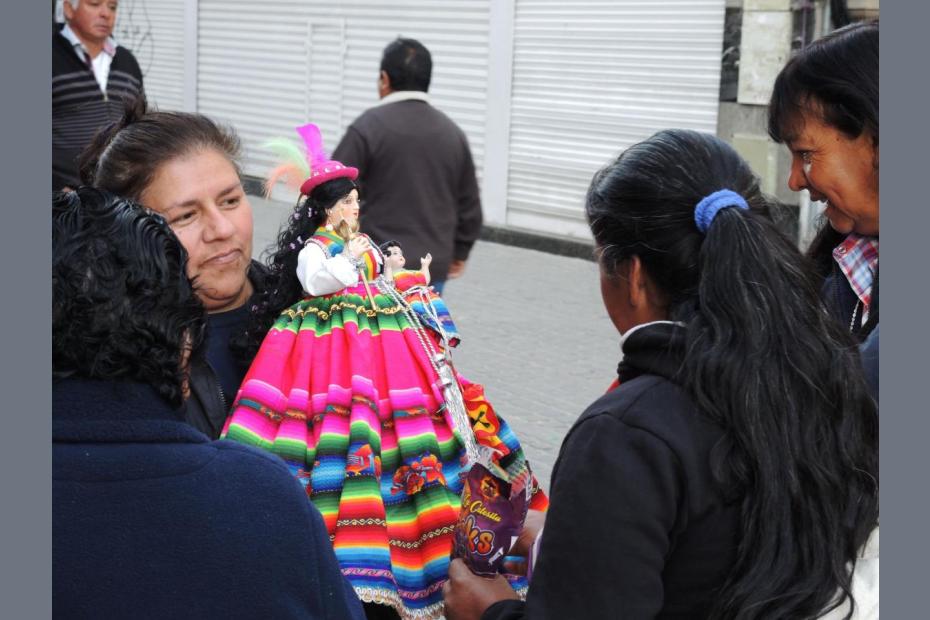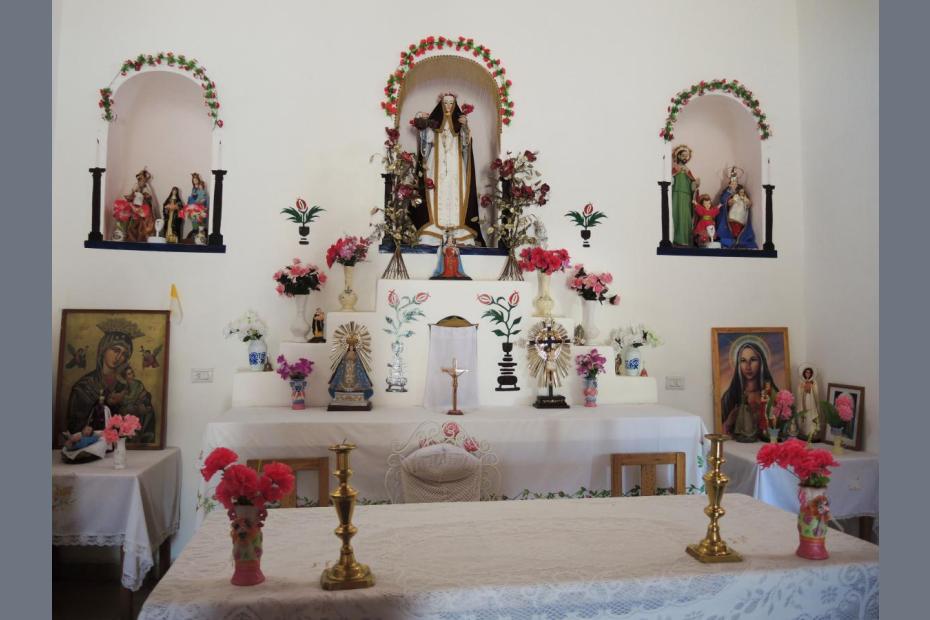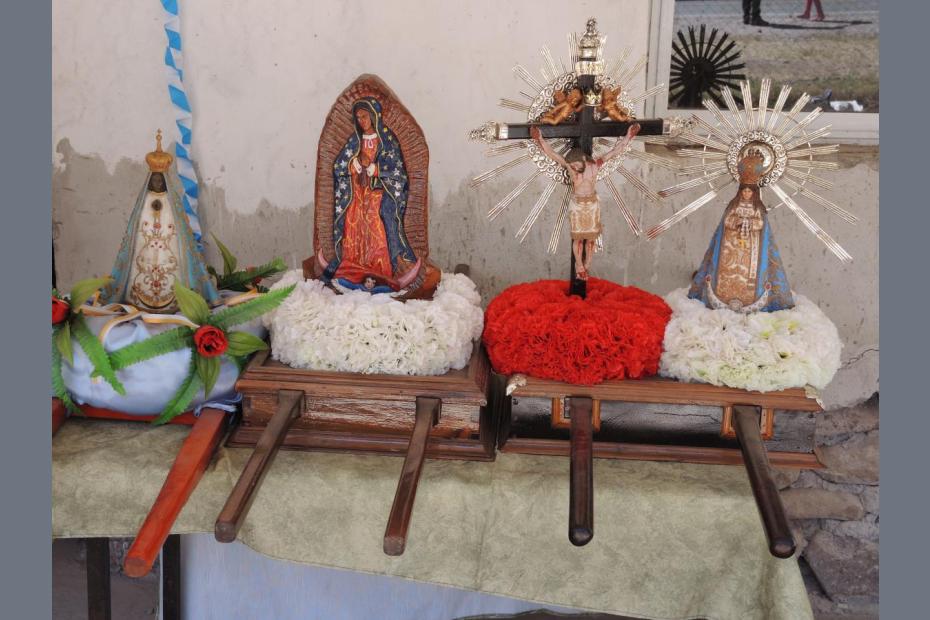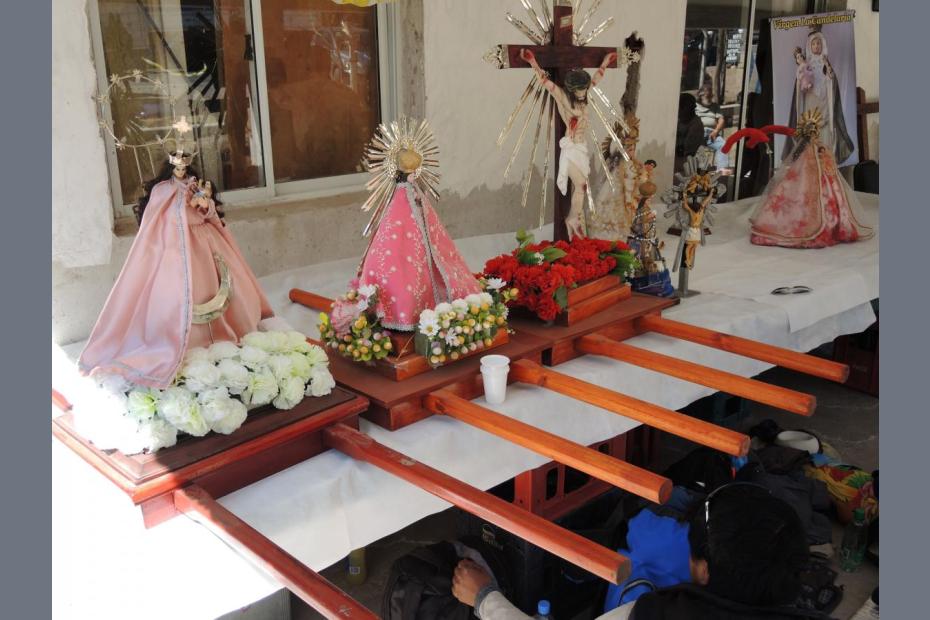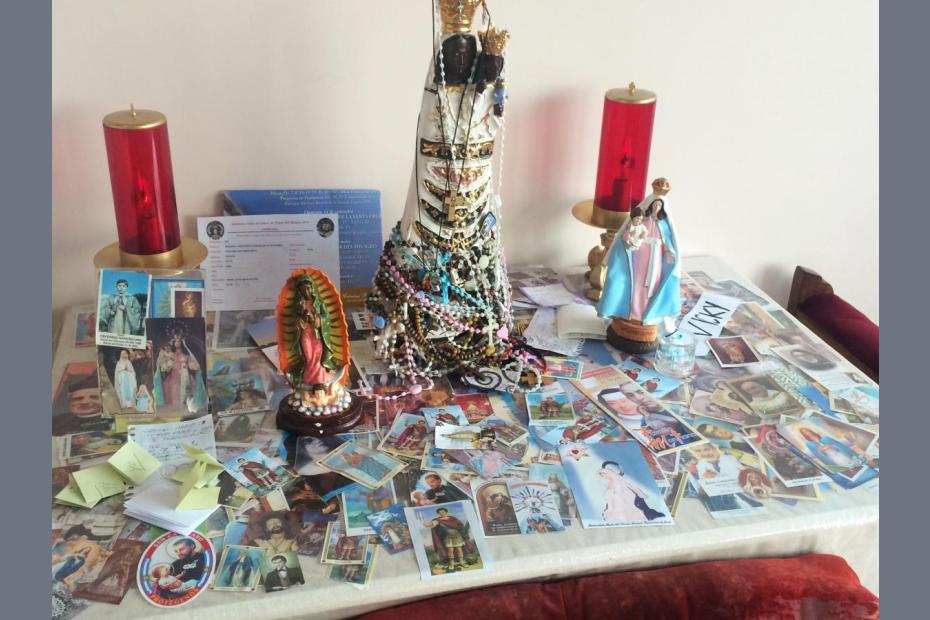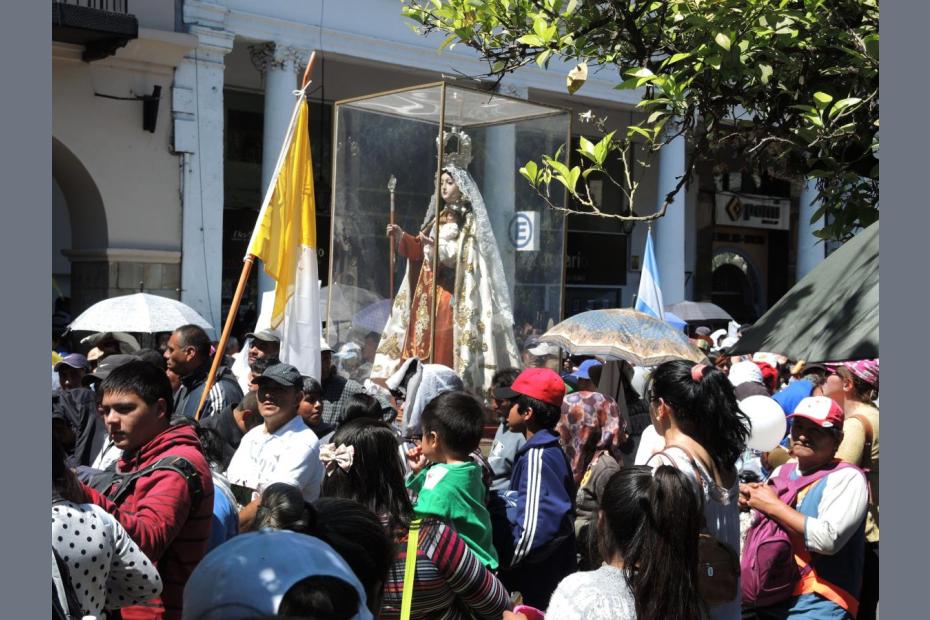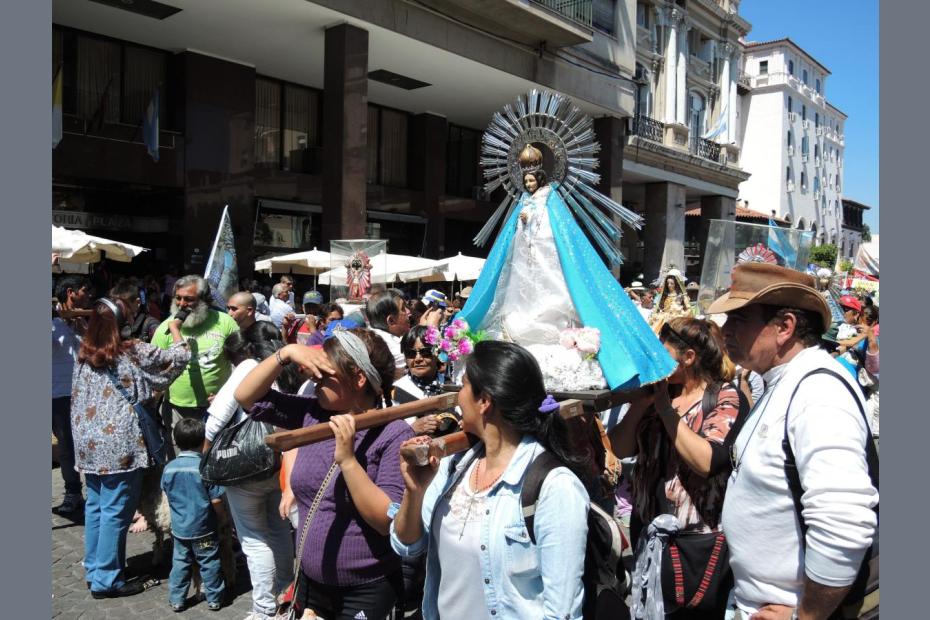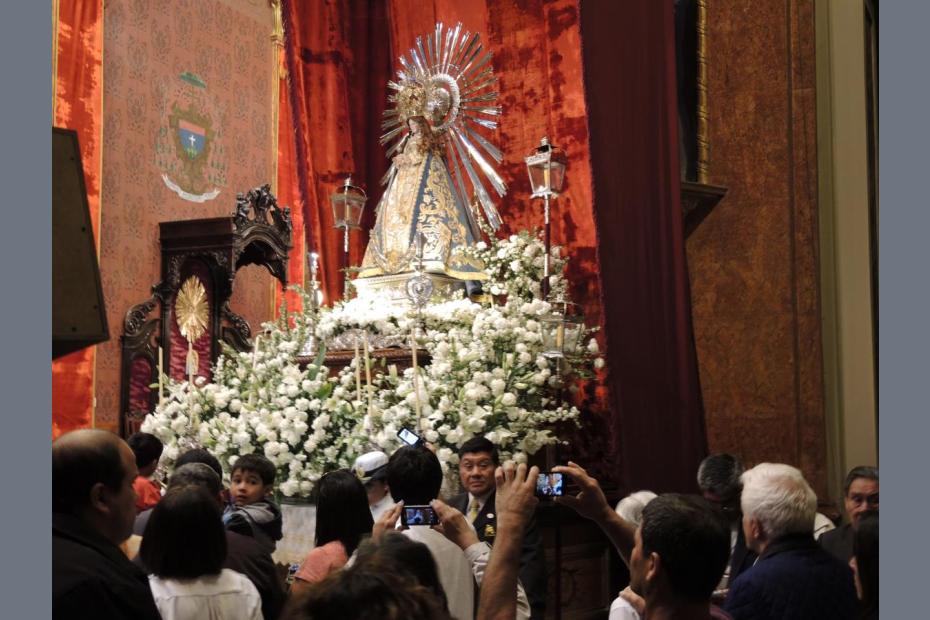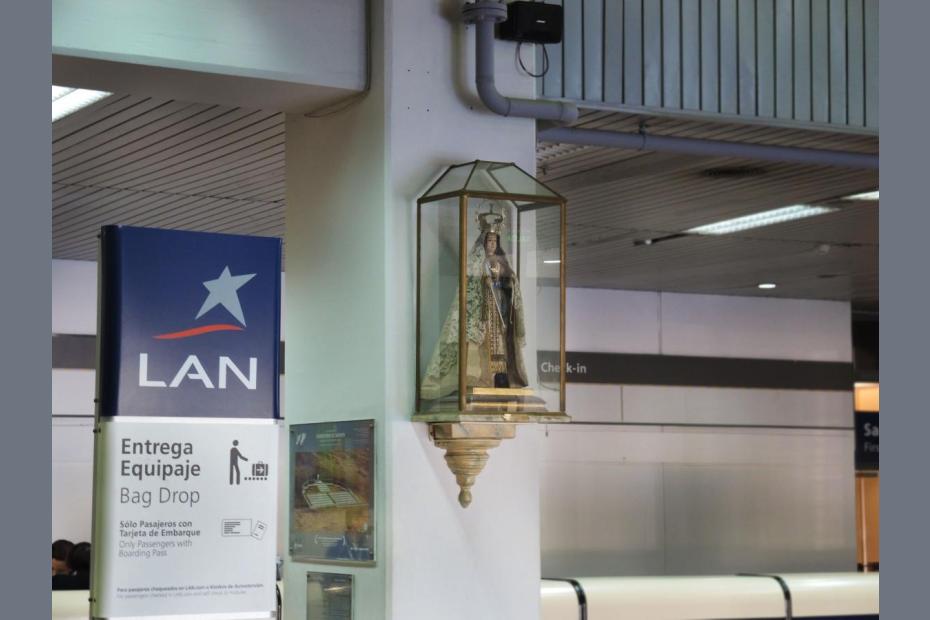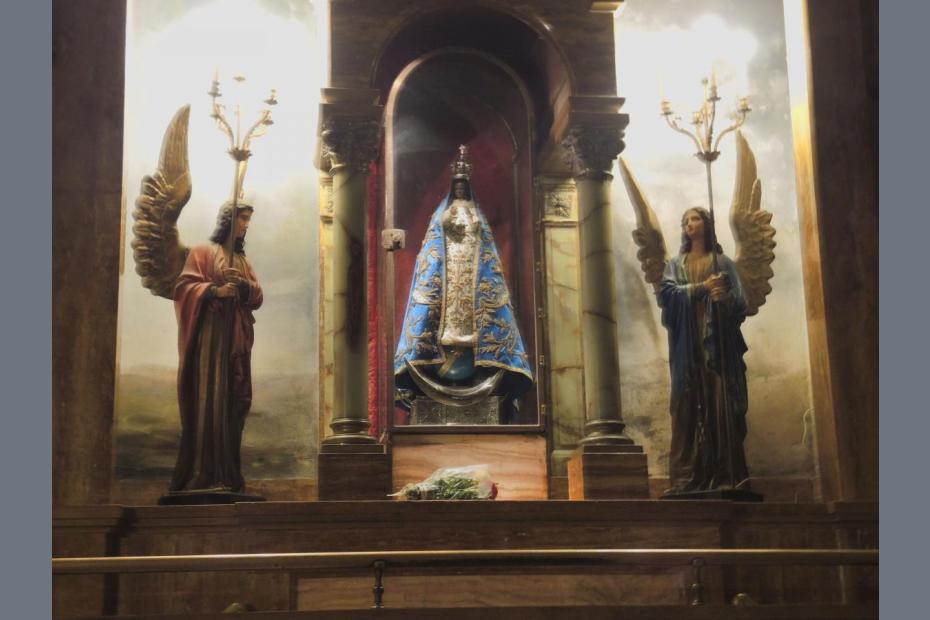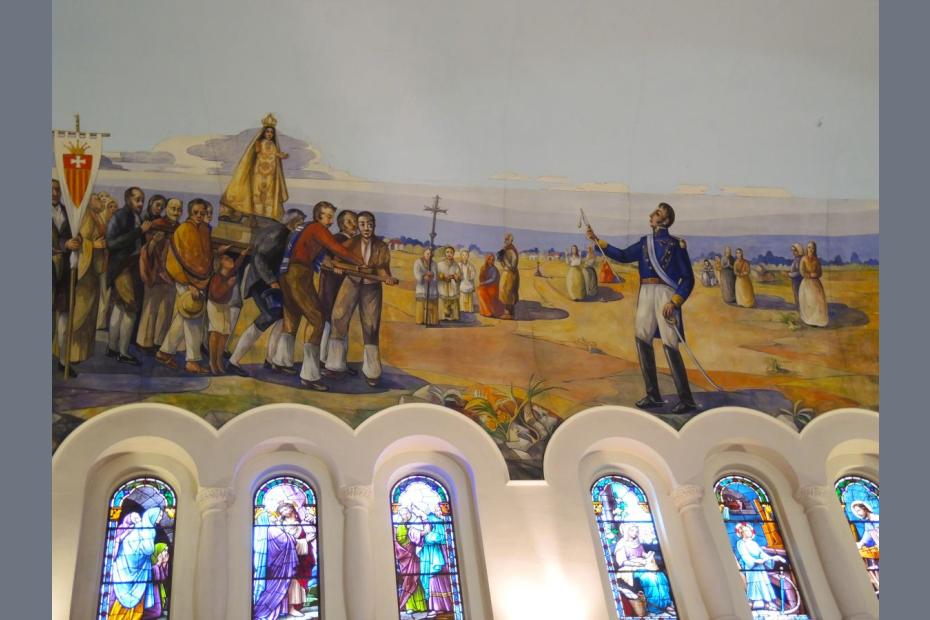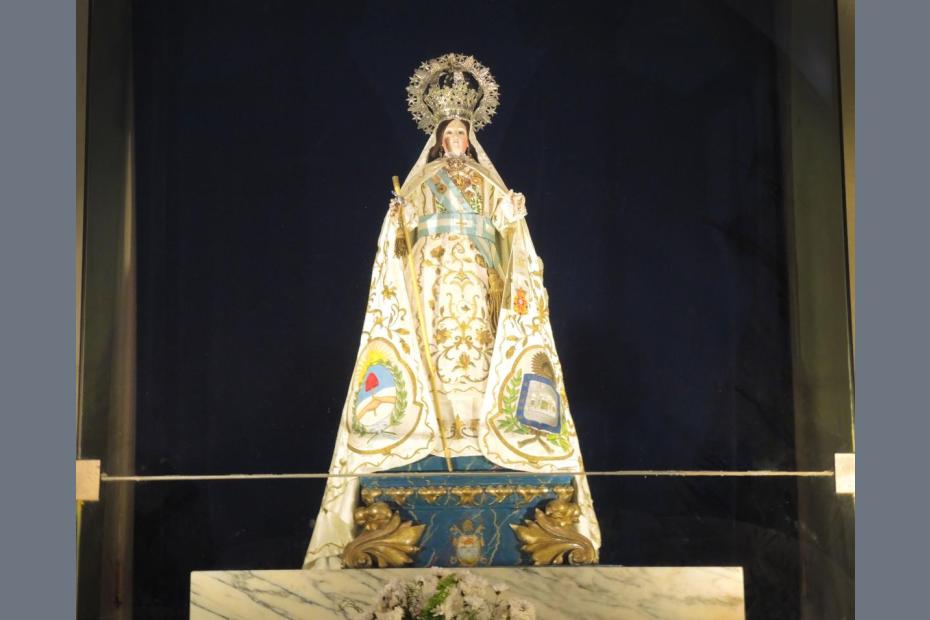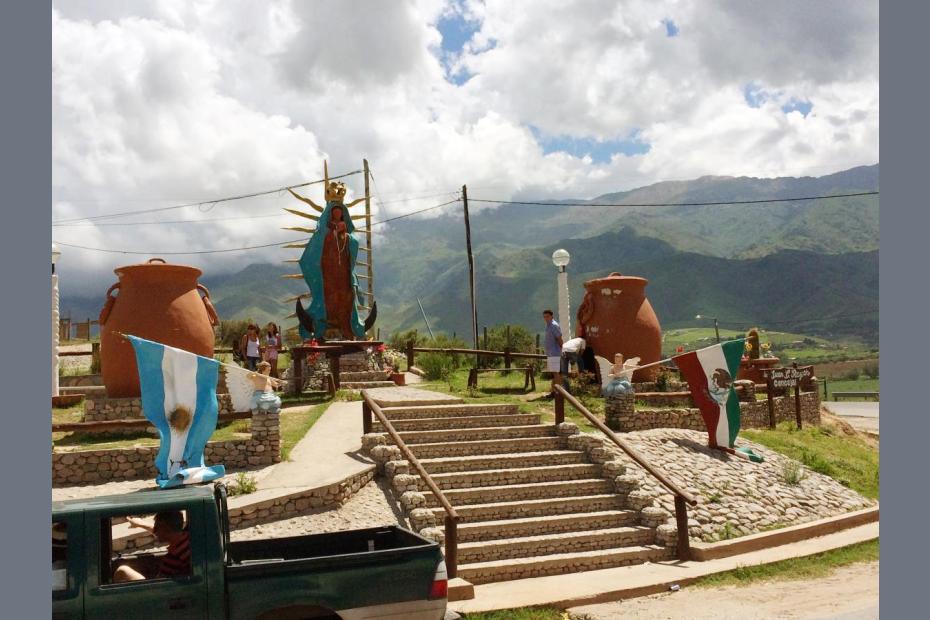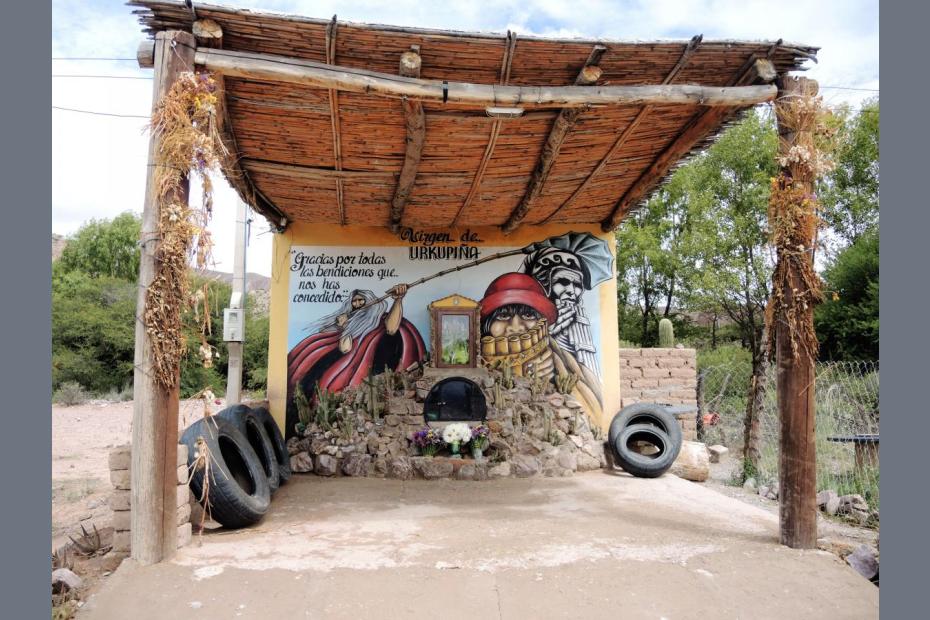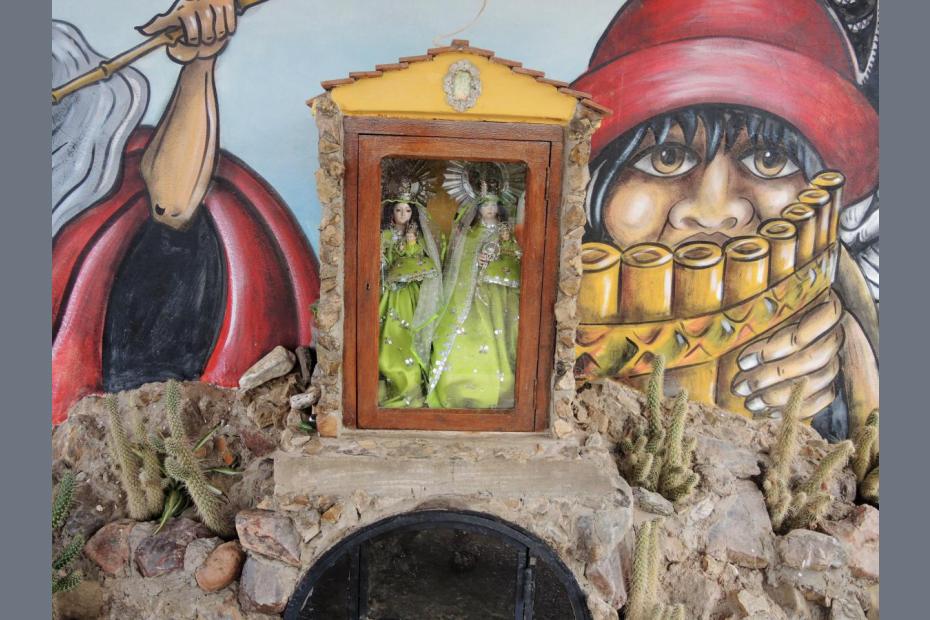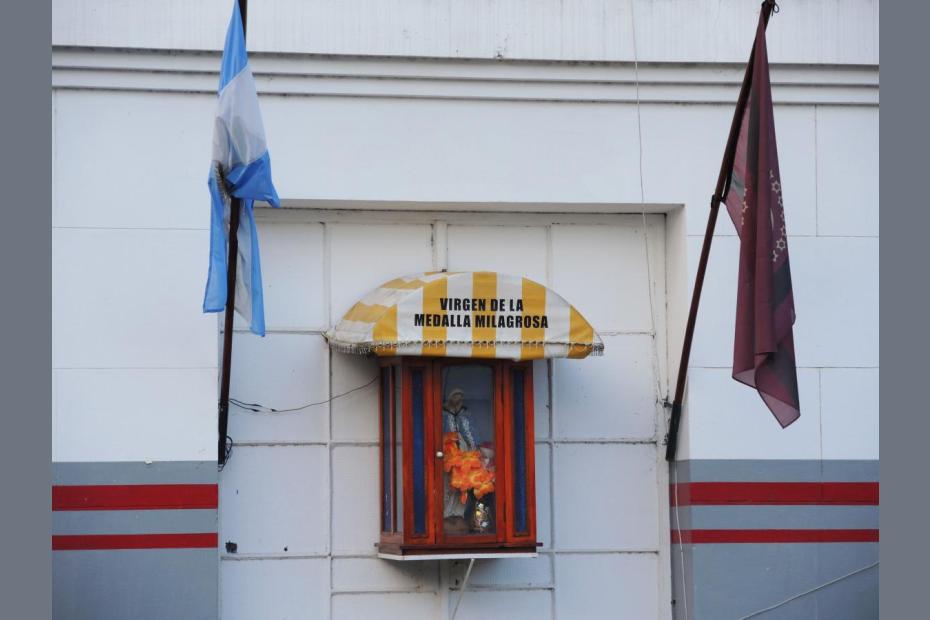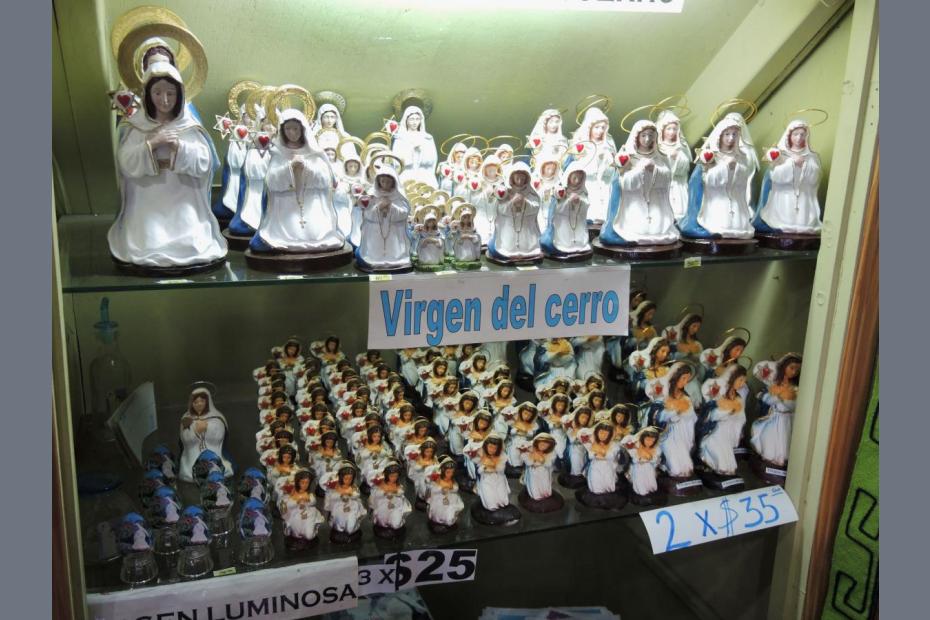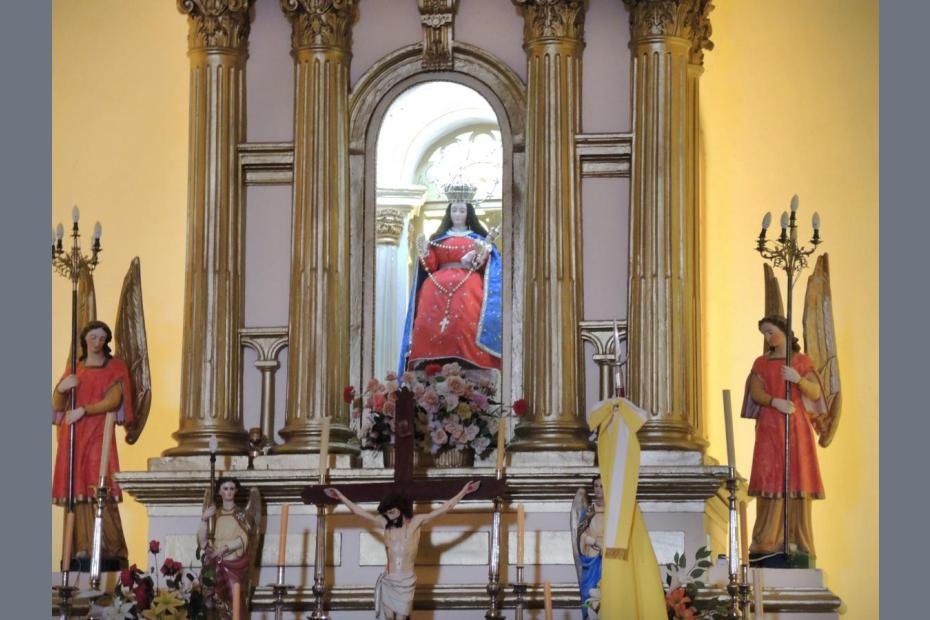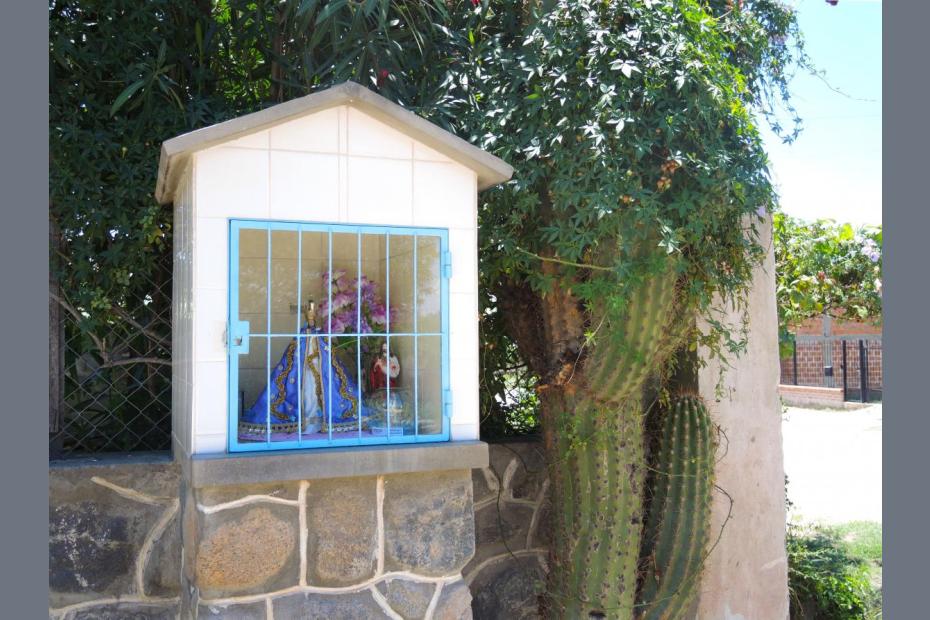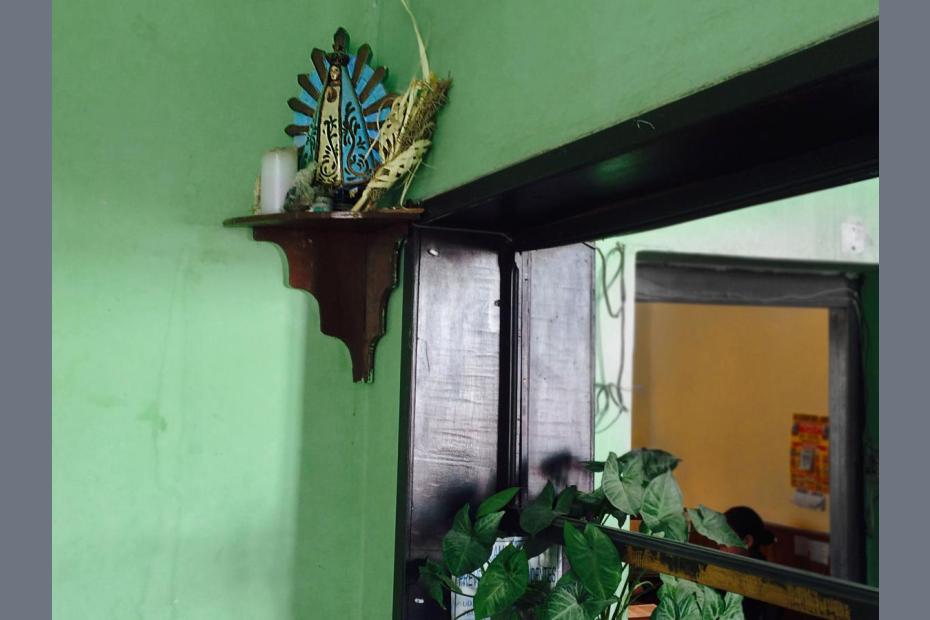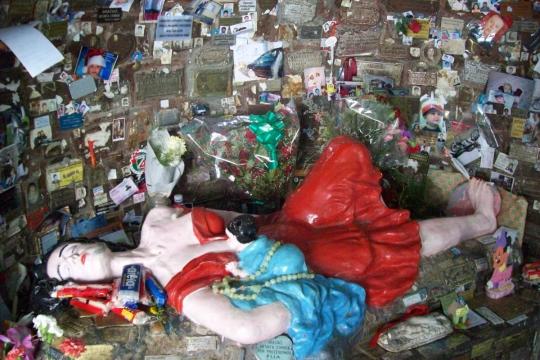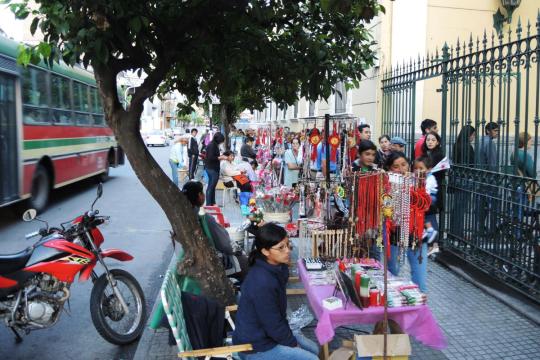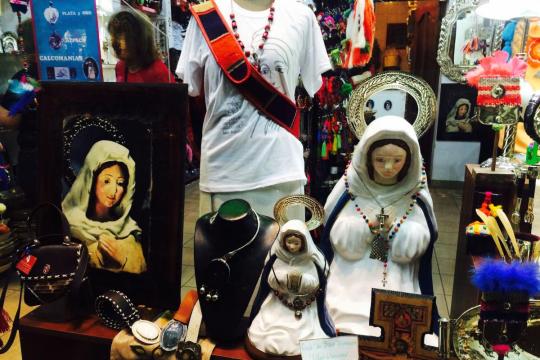It is difficult to overstate the role of Marian devotion in Argentine Catholicism. "La Virgen," under many titles and apparitions, plays a prominent role in the lives of Argentine Catholics, next to Jesus, as the Mother to whom they pray for protection. She has been tied directly and repeatedly into narratives of Argentine national identity, and is visible not only in prominent places on church altars, but in public buildings like city halls and police stations, in parks, in small shrines on private land, and in people’s homes.
One of the most remarkable elements of Argentine devotion is the proliferation and salience of local advocaciones, titles or appearances under which Mary is invoked. These advocaciones are not just historic legacies that have faded into the background. Quite the contrary, many ancient advocaciones endure as important popular devotions, and new ones continue to develop among, and to be imported by, the faithful.
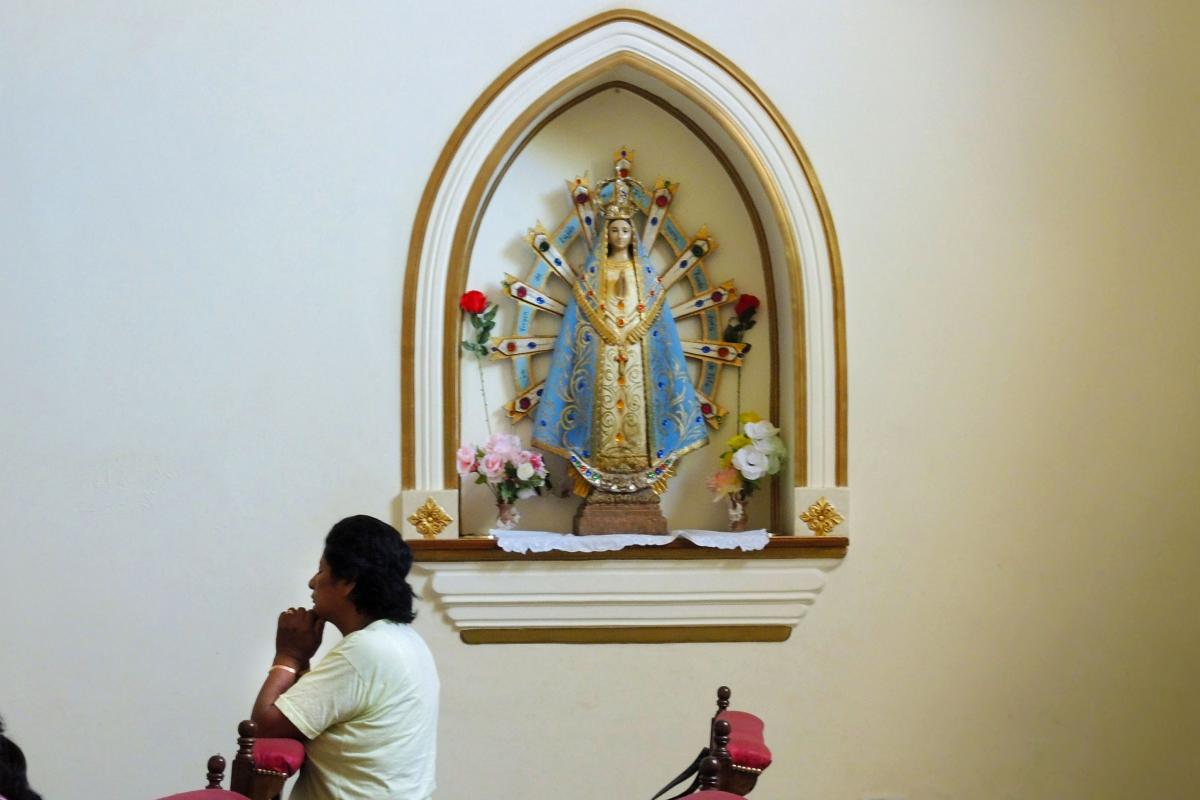
Our Lady of Luján, the Patroness of Argentina, is celebrated with an enormous basilica church in Buenos Aires Province. Her image can be seen throughout the country, but is often locally superseded by other local advocaciones, including:
- La Virgen del Carmen, a devotion brought from Europe by the Carmelites, has significant local followings as patroness of dozens of towns.
- La Virgen de Itatí is Patron of Corrientes Province. Her feast is said to draw hundreds of thousands of pilgrims each year.
- La Virgen de la Merced (Mercy), an advocación brought from Europe, is embraced in Argentina as its own national figure. At a church dedicated to her in central Tucumán, a large mural shows her image being brought before General Belgrano, who credits her with intervening to help Argentine independence forces win a key battle over a much larger royal army. Above the altar, in a sash with the national colors and in robes embroidered with national symbols, she holds the baton that General Belgrano presented her in thanks. She is titled as Patroness and General of the Argentine Army. She is also Patroness of Tucumán Province and of many towns.
- La Virgen del Milagro (the Miracle) is co-patron of Salta Province. Her feast, celebrated with the Señor del Milagro, drew 800,000 devotees in 2015.
- La Virgen del Rosario (Rosary), a Spanish Dominican devotion, has a following in many parts of the country.
- La Virgen del Valle (of the Valley), colloquially “La Morenita,” — the Little Brown One, is a devotion that dates back to the early 17th century when a native man discovered a brown-faced statue of the Virgin in a cave in the Catamarca region. This image has been embraced, like Our Lady of Guadelupe, as a symbol of Mary’s protection for indigenous people. Nearly 100,000 people are said to come to her feast in Catamarca after Easter each year.
- La Virgen de Urkupiña, a Bolivian devotion, has recently become “fashionable,” as one Argentinian put it, in northern Argentina. Devotees like to dress her in different outfits, but she can often be recognized by her thick eyelashes and a whitish complexion.
Two new Marian apparitions, in San Nicolás de los Arroyos and in Salta, have drawn tremendous attention in Argentina. In the early 1980s in San Nicolás, near the river Paraná, a woman claimed to have seen apparitions of the Virgen del Rosario. A giant new sanctuary church was recently opened in honor of her on a site that the seer says the Virgin chose. Beginning in 1990, a housewife and mother in Salta began to experience what she understood to be a series of appearances by the Virgin. In the last 15 years, crowds of devotees have been drawn to a tiny sanctuary dedicated to the Virgen del Cerro in the hills above Salta, in Northern Argentina.
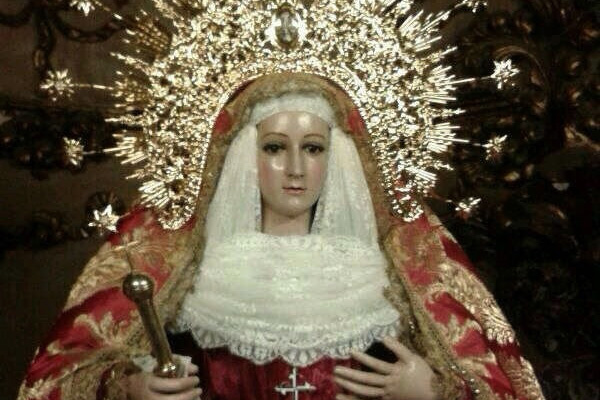
Saints of their own
Attachment to Mary is so powerful that it generally overshadows devotion to other saints. But there are exceptions, including several who have no standing with the Church, and are perhaps apocryphal, but who find a place squarely within the popular pantheon of the Catholic poor. Argentina has no officially canonized saints of its own, but this is not to say that Argentina has not, in a different way, given birth to saints of its own. In the north in particular, several unofficial saints and one fairly obscure but officially recognized saint compete for believers’ attention with the Church’s preferred roster of saints.
San Expedito, the only one of these popular saints to be canonically accepted (though he is almost unheard of in most parts of the world), is a subject of fervent devotion among poor people who believe he can help solve seemingly intractable problems quickly.1 Locals flock to his statue in a church in San Miguel de Tucumán each month. Small shrines to him appear in parks and along roadsides occasionally, and devotees often leave small statues and holy cards with his image at side altars of churches and at airport altars.
From a strictly orthodox, theological point of view, three unofficial, native saints of Argentina — Gauchito Gil, Difunta Correia, and San la Muerte — would have no place in an account of global Catholicism. But from a practical, on the ground perspective, they are impossible to ignore. They have no place in any official Catholic roster of saints, but have very powerful followings nonetheless, including among a notable subset of Catholics. At the very least, they can be counted as important competitors for devotional attention, but for believers, they are folded in to common understandings of faith. Frank Graziano, who studied folk saints like Gauchito Gil and Difunta Correia in depth, suggests that for their devotees, “Catholicism is not so much abandoned as expanded; it is stretched to encompass exceptional resources.”2 Their images borrow heavily from Catholic iconography, and they have so many roadside shrines in particular regions of the north that a non-Catholic outsider could readily be forgiven for assuming that these were major — and official — Catholic religious figures. They even have their own feast days and large celebrations to mark those days.
Devotion to these saints, official and unofficial, is markedly delineated by social class. Upper class and educated Catholics generally look down on these devotions as superstitions beyond the bounds of the faith. It is not that middle-class and better-educated Argentinians are uncomfortable with a highly mediated Christian world, the way some of their counterparts are in more culturally Protestant countries. Educated Catholic Argentinians also believe in intercession, but ascribe that power particularly to Mary. Graziano describes a number of ways that priests and bishops have tried to channel devotion to Gauchito Gil or Defunta Correia toward traditional Catholic forms, but suggests that most efforts to do this fail to eliminate such devotion. Devotees overwhelmingly tend to incorporate both rejection and channeling as affirmations of the unofficial saints’ powers.3 Still, images of Gauchito Gil, Difunta Correa or San la Muerte are rarely left (or allowed to stay in place) on an altar in a church, or among the saints carried on andas at official feasts, or even among the holy cards left in airport chapels. The devotees seem to have to find space for them in other public and private spaces.
Intimacy and Protection
Argentine Catholics, when interviewed about their particular devotion to Mary, make clear that there is only one Mary, but tend to be quite comfortable with the idea that she has that she has many advocaciones.4 They explain the existence of so many advocaciones in different ways, but one summarized one of the most common explanations by saying, "what is important is that each [advocacion] signals that the Virgin, your mother, is here with you... She is our Lady because she visits us in our cities and our houses. That she visits us, the relationship she establishes, is more important than what favors she could do for us." Other interviewees were quick to say that Mary and the saints are not God, but that they revere both the Virgin and a number of saints as figures who possess the power to heal.
Though the most popular images of Mary tend to be visually archaic — images typically portray her showing only face and hands, in a triangular dress that obscures any other trace of physical embodiment — devotees speak to her in very intimate terms, as their tender mother. Believers describe Mary most frequently as their Mother and protector, someone who struggled and knows our struggles, and describe that with a tremendous sense of connection and intimacy. That intimacy is often visibly manifest in the way that so many Argentines caress her images when possible. Argentinians tend to be very tactile — it is normal to greet family and friends with a kiss — and that tactile quality extends to devotions to saints as well, even to a Virgin dressed so counterculturally. Asked about this cultural discrepancy, one interviewee, a very successful woman who dressed in high style stated that, for her, that image of the Virgin did not pose a challenge. Instead, it reminder her of tenderness and protection, of "a mantle she uses to cover me in prayer."
Graziano notes that while Argentines know their theology in terms of divine hierarchy, in practice, “the God who performs the miracles tends to disappear into the background. The requests for miracles are made to folk saints, the granted miracles are credited to folk saints, and the thanks, including prayer and offerings, are credited to folk saints rather than to God.”5 The same could readily be said of devotions to the Virgin and to San Expedito.
- 1San Expedito does have a following across the Andes around Viña del Mar, Chile.
- 2Frank Graziano, Cultures of Devotion: Folk Saints in Spanish America (Oxford: 2007) 29.
- 3Graziano, 72-75.
- 4Twenty Catholics in the northern provinces of Tucumán and Salta discussed their devotion to Mary as part of interviews for this project. It bears noting that Jesus also seems to have his own advocaciones, like the Señor del Milagro of Salta and Jesús de la Misericordia, but these are far fewer in number than those of the Virgin.
- 5Graziano, 12.
